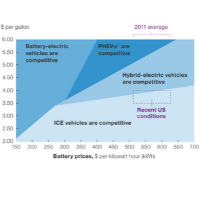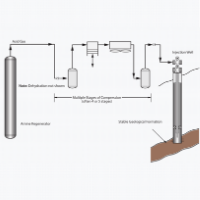Low or no carbon hydrogen production, distribution and consumption is thought to be one of the primary solutions to reaching net zero for heavy industry, possibly power generation, residential use for heating and cooking, as well as transportation. Hydrogen has a high heating value, and the combustion reaction does not produce CO2. According to H2 Tech, there are currently 876 green hydrogen projects, and 245 blue hydrogen projects ongoing.
An example of the level of attention, in 2021 the U.S. passed the Infrastructure, Investment and Jobs Act (IIJA) which contains $9.5 billion in funding for hydrogen1. $8 billion of that is dedicated to the development of hydrogen hubs (H2Hubs) in the U.S.. In 2022, the Inflation Reduction Act (IRA) contained two tax provisions that will subsidize clean hydrogen production2. The U.S. Department of Energy (DOE) defines H2Hubs as a network of clean hydrogen producers, potential consumers, and connective infrastructure that are all located in close proximity to one another. The DOE will release the funding to six, and possibly up to ten, clean hydrogen hubs around the country.
The interest in clean hydrogen is not just a U.S. trend. The U.K. has developed a Hydrogen Strategy3. Japan4, Australia5 and other countries are also looking to hydrogen as a key part to the solution of combatting climate change. The EU commission also plans on subsidizing “green” hydrogen to the tune of €800 million and will offer a “fixed premium” per kg of “green” hydrogen produced, subsidizing this production over a 10-year period6.
Given the amount of investment and interest in hydrogen, we have decided to publish a series of “Tips of the Month” to explore the opportunities, challenges, and potential solutions to hydrogen applications and uses; this is the first paper in the series. As such, we will start this exploration from the beginning – what are the colors of hydrogen? How are they produced? What are their technical challenges for deployment? After that we will review the USE case for hydrogen. Why is there such an interest and focus for these investments?
Our future tips will explore the possible end uses and benefits of hydrogen, thermodynamics of natural gas use versus hydrogen in industrial applications, safety considerations, transportation challenges and opportunities, storage, and end use capabilities. In addition, we will take a look at some cost comparisons, where possible of the different hydrogen production options. We hope you enjoy taking this journey with us. Our aim is to take a thermodynamically balanced non-biased view of possible applications, costs, and implications.
[Keep reading]









